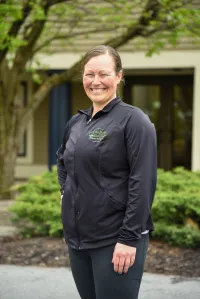Latest Articles

Physical Therapy for Women's Sports Injuries: Recover Stronger and Faster
Physical Therapy for Women's Sports Injuries: Recover Stronger and Faster
As a physical therapist specializing in women's sports medicine, I have dedicated my career to understanding female athletes' unique challenges regarding sports injuries. This article will explore common sports injuries in women and how physical therapy can facilitate recovery and prevent future injuries.
Common Sports Injuries in Female Athletes
One of the most prevalent injuries I encounter is the anterior cruciate ligament (ACL) tear. Research indicates that women are 2-8 times more likely to experience this injury than men, particularly in sports that involve sudden changes in direction, such as soccer and basketball. Factors contributing to this increased risk include anatomical differences like wider hips, hormonal influences that can affect ligament strength, and variations in landing mechanics. In my practice, I emphasize a comprehensive approach to ACL rehabilitation, focusing on strengthening the surrounding musculature—especially the core, hips, and thighs—to improve overall knee stability. The recovery process typically spans several months, but with diligent effort and proper guidance, many athletes successfully return to their sport even stronger than before.
Another significant concern is stress fractures, which frequently affect female athletes involved in high-impact sports like running and gymnastics. These small cracks in the bone often result from repetitive stress or overuse, and women are particularly susceptible due to factors such as lower bone density. In addressing stress fractures, I prioritize identifying the underlying causes of the injury rather than merely treating the symptoms. This includes assessing training regimens, biomechanics, and nutritional habits. Treatment typically involves a period of rest or modified activity followed by a gradual return to sport while focusing on proper form and technique. Collaboration with nutritionists may also be necessary to ensure athletes are adequately fueling their bodies for optimal performance and recovery.
Patellofemoral pain syndrome, commonly referred to as "runner's knee," is another condition that frequently affects female athletes. This syndrome causes pain around the kneecap and is more prevalent among women due to anatomical factors such as wider hips. My approach to treating patellofemoral pain involves a combination of strengthening exercises targeting the quadriceps, hip abductors, and core muscles. Weakness in these areas can lead to poor knee alignment and increased stress on the patellofemoral joint. Additionally, I incorporate manual therapy techniques to address soft tissue restrictions and improve joint mobility. As treatment progresses, sport-specific drills are introduced to ensure that improved strength and mechanics translate into athletic performance.
Shoulder instability and rotator cuff injuries are also common among female athletes involved in overhead sports like swimming, tennis, and volleyball. Women tend to experience these injuries more frequently due to differences in upper body strength compared to male athletes. In my practice, I focus on restoring stability and strength not only in the shoulder but throughout the entire kinetic chain. This holistic approach includes strengthening exercises for the rotator cuff muscles as well as scapular stabilizers and core muscles. Proprioceptive training is also utilized to enhance coordination during athletic movements. By addressing both local strength deficits and overall body mechanics, we can help athletes regain confidence in their shoulder function.
The Role of Physical Therapy
Physical therapy plays a vital role in both recovery from sports injuries and prevention of future issues for female athletes. My approach begins with personalized treatment plans tailored to each athlete's specific injury, sport demands, and individual needs. This may include a combination of therapeutic exercises, manual therapy techniques, modalities for pain relief (such as ultrasound or electrical stimulation), and education on injury prevention strategies.
As athletes progress through rehabilitation, I incorporate sport-specific training into their programs to ensure a safe return to play. This gradual progression helps build confidence while minimizing the risk of re-injury.
In summary, my goal as a physical therapist specializing in women's sports medicine is not only to facilitate recovery from injuries but also to empower female athletes with knowledge about their bodies. Through comprehensive rehabilitation programs that focus on strength building, biomechanical correction, and education on injury prevention strategies, we can help women recover stronger and faster than ever before. Whether you're a competitive athlete or someone who enjoys recreational sports, know that there is always a path forward after an injury—and it often leads directly back to peak performance.
Get A Jump On Your Day.
Get a summary of our latest articles by subscribing to our newsletter below.

